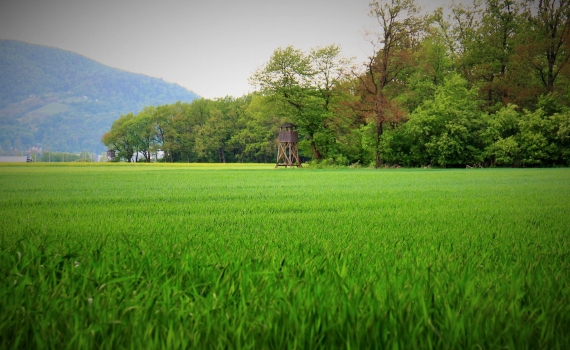MAGNA NUKLEUS: LAKIRNICA NA OŽJEM VODOVARSTVENEM OBMOČJU
Projekt Magna Nukleus oz. postavitev lakirnice na Dravskem polju je v okoljskem smislu sporen zaradi dveh zadev- prvič zaradi pozidave rodovitne prvovrstne kmetijske zemlje, ki je za povrh vsega še na ožjem vodovarstvenem območju in kot drugo zaradi prvotno predvidene sečnje 66 ha gozda, s čimer so želeli nadomestiti izgubljena kmetijska zemljišča. Negativno mnenje o sečnji sta podala Kmetijsko gozdarski zavod in Zavod za varstvo narave, ki sta gozdu pripisala pomembno ekološko funkcijo. Profesorji Biotehniške fakultete pa so na drugi strani opozarjali, da bo Slovenija s pozidavo 100 ha najkvalitetnejše prsti v Sloveniji še nazadovala na področju trajnostne preskrbe (potrebovali bi 2000m2/ prebivalca, trenutno imamo 850 m2/ prebivalca in smo na repu EU; v Sloveniji pa izredno primanjkuje za poljedelstvo primernih tal v ravnini) poleg tega pa se bo občutno zmanjšal letni vodni pretok v podtalnico (za 182 000 m3 na leto).
Pri projektu Magna Steyer v občini Hoče- Slivnica je bilo že od začetka prisotnih veliko proceduralnih napak, sprenevedanja funkcionarjev in politikov ter tudi veliko vprašljivih odločitev na krajevni, občinski in državni ravni. Posledice pa lahko nosijo najmanj okoliške vasi, zaradi lege na vodonosniku pa tudi širša štajerska regija. Zaradi zaskrbljenosti in številnih odprtih vprašanj je tako na področju Magne vzniknilo precej civilnih iniciativ, ki so zahtevale odgovore za zaskrbljeno prebivalstvo. Tako kot številne slovenske nevladne organizacije, ki so opozarjale na posledice umeščanja, so bile tudi iniciative deležne številnih pritiskov, groženj in diskreditacij na osebni ravni. Čeprav je CI Rešimo rogoški gozd uspelo najti rešitev za 62 ha gozda in čeprav so našli rešitev, ustrezno za kmetijsko- gozdarski zavod, tudi za preostale 4 ha, ministrstvo ni želelo pristati na popolno opustitev sečnje. Do danes so tako padli 4ha gozda, nevarnost ostaja še za preostale hektarje, saj OPN ni ustrezno spremenjen. Rodovitno zemljino so tako prestavili na območje posekanega gozda (čeprav je stroka opozarjala, da je to popolni nesmisel), ozemlja, ki je izrednega vodovarstvenega pomena, pa niso uspeli rešiti, zato na tem območju že raste lakirnica. Gradnja lakirnice je na ožjih vodovarstvenih območjih v Sloveniji zakonsko prepovedana, poleg vsega pa bo prevoz karoserij prispeval tudi k znatnemu povišanju emisij CO2 (v času obratovanja 114.928 kilogramov na dan). V celotnem procesu je bilo opaziti medijsko pristranskost in neobjektivno poročanje, poleg vsega, pa je projekt v neskladju s številnimi mednarodnimi pogodbami, ki jih je Slovenija ratificirala ter tudi s Cilji trajnostnega razvoja h katerim se je zavezala. Dolgoročno gledano bo projekt bodoče generacije oropal možnosti trajnostnega razvijanja, jih naredil še bolj odvisne od drugih držav in še povečal razliko med vzhodno in zahodno regijo v Sloveniji. Projekt je krepko zamajal pravno državo in ignoriral številne tudi ustavne pravice državljanov, po drugi strani pa ne bo reševal težav Štajerske, ki krvavo potrebuje delovna mesta za izobražene. Posledice sečnje in tovarne bi tako čutili predvsem krajani ene vasi- kot so dejali: Imamo dva otroka (gozd in zemljo). Ministrstvo nas sili, da oba ubijemo.
Location
https://www.google.si/maps/place/Municipality+of+Ho%C4%8De+-+Slivnica/@46.4901282,15.5533851,12z/data=!3m1!4b1!4m5!3m4!1s0x476f790773dbc099:0x400f81c823ff600!8m2!3d46.477858!4d15.6476005
Environmental impact
- Air pollution
- Water pollution
- Land degradation (e.g. drought, soil contamination, erosion and desertification)
- Depletion of natural resources (fossil and mineral, forest, water, etc)
- Waste, waste disposal, and toxicants
- Hazards related to extreme weather events – natural disaster
- Alteration of landscape aesthetics and built heritage
Ethical/ legal issues
- Life and personal security
- Health and well-being
- A clean and prosperous environment and a safe and pleasant habitat
- Equality before the law and protection by the law (including marginalized and discriminated groups because of colour, race, gender, disability, descent, economic status, age, etc.)
- Access to public goods/ resources and products
- Personal and social development, economic progress and innovation
Information sources & materials
Contributor(s)
Urška Trček, trenerka globalnega učenja



Home › Forums › MAGNA NUKLEUS: AN AUTOMOTIVE PLANT ON THE WATERWAY AREA